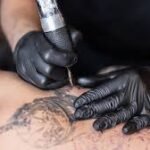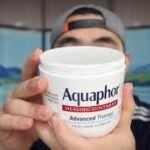When getting a tattoo, most people spend hours thinking about the design, character, or symbol that will tell their story. But have you ever wondered how the placement changes its meaning? Where you choose to put your ink isn’t just about aesthetics—it speaks volumes about your personality, life, and the message you want to send.
As a tattoo artist, I’ve seen how a specific location can make or break a piece. A good tattoo flowing with the body’s natural lines always looks incredible, while the wrong spot can make even the best designs appear awkward. That’s why it’s important to consider not just what you ink, but where.
Your tattoo’s placement reveals more than you might know—whether it’s a bold statement on your forearm or a hidden meaning near your ribs. Different areas convey different emotions, and picking the right one ensures your ink always feels comfy and true to you.
Tattoo Placement Chart: Match Your Tattoo Placement to Your Design’s SIZE
When getting a tattoo, one of the most overlooked yet crucial steps is deciding where to place it. The right location doesn’t just enhance the design—it tells a story about your personality and life. For example, a thin, delicate script might look great on your wrist or behind the ear, while a huge, detailed tribal or Japanese piece needs more space, like your back or upper arm. The size and elements of your ink should match the body part you pick—otherwise, even the most stunning symbol can lose its impact.
Over the years, I’ve noticed how a tiny, misplaced tattoo can feel out of place, while a well-proportioned piece elevates the entire message. That’s why I always check a placement chart before finalizing a design. Whether you want a small, medium, large, or extra-large tattoo, there’s a perfect spot—like the forearm for bold character art or the ribs for something more intimate. Next, we’ll show more ideas for different placements, but remember: your tattoo’s meaning deepens when its location sends the right reminder.
Small
The smallest areas of the body like the wrist, fingers, ankle, and space behind the ear work best for simple designs using basic shapes – think delicate symbols or minimalist line work. These small spots (back of the palm, top of the foot, above the elbow, or knee) offer just enough canvas for meaningful tiny tattoos while keeping them easily concealable. In my experience, clients often choose these locations for their first tattoo, appreciating how the compact size pairs perfectly with clean, uncomplicated art that stands the test of time.
Medium
When picking a medium-sized tattoo, think of your body as a collection of canvases—each area offers unique potential. Forearm, calves, and upper arm are great for script or flash designs, balancing visibility and fit. For a long, skinny piece, the inner thigh or shins work well, while shoulder, neck, or sternum areas suit bolder art. Personally, I’ve found the blade (shoulder blade) perfect for intricate work, as its flat surface holds detail beautifully. Just remember, placement affects both aesthetics and comfort, so choose wisely.
Large
If you want detailed tattoos with intricate elements, go for large areas like the chest, upper back, or stomach—these body canvases give artists room to work. The ribs and lower back suit flowing designs, while the upper thigh and hip handle both curves and sharp lines well. Personally, I’ve seen stunning pieces on the blade (shoulder blade) where shading thrives. For medium-sized work, the forearm, calves, or upper arm fit script or flash designs neatly, but if you prefer long, skinny art, the shins or inner thigh are great picks. Just remember: bigger areas mean more detail, but also more commitment.
Extra-large
When you’re ready to commit to truly extended pieces, extra-large canvases like a full sleeve or full back (+ buttocks and back of thighs) become your ultimate body canvases. These biggest areas give tattoo artists room to create stunning detailed tattoos with complex elements – perfect for traditional Japanese body suits or custom masterpieces. I’ve worked with clients who transformed their entire upper back + lower back into flowing artworks that tell complete stories.
For slightly smaller but still impressive large areas, the chest + stomach combo or full leg sleeve offers amazing space. While these projects require multiple sessions, the combination of several areas creates breathtaking results. Remember, medium-sized spots like forearms or upper arms work for script and flash designs, but these largest canvases are where truly epic work happens between artist and client.
Tattoo Placement: Men vs. Women
While the design is #1 in making your tattoo stand out, where you choose to place it determines whether it looks bold or delicate – and yes, some placements are typically more masculine or feminine. Through years of inking both Men and Women, I’ve noticed how a character or symbol in the right spot can perfectly tell your story while matching your personality. The meaning behind your ink changes with its placement, whether you’re considering a sleeve that looks powerful or a subtle collarbone piece – it’s all about what you want your tattoo to say about your life.
Here’s What the Placement of a Tattoo Means
The placement of your tattoo often speaks louder than the art itself. While modern people choose body art primarily for personal meaning, ancient cultures used tattooed marks as powerful messages – authorities would mark lawbreakers on their faces to warn others. Today, when someone notices your ink, they’ll first consider what it represents, but the location matters just as much. I’ve seen clients spend months picking designs only to rush the place decision, not realizing how a chest piece over the heart carries different weight than the same work on a foot – one symbolizes deep emotion, the other your path through life.
What fascinates me after 12 years in the industry is how perception shifts based on area. A quote about guidance on your neck makes different assumptions than when hidden under a sleeve. Some select specific spots like hands or face precisely because they can’t be hidden, making bold statements. While placements aren’t tied to universal meanings anymore, they remain important – your wearing a meaningful tattoo on your arm versus your back changes how others mean it, and how you based your choice on personal truth rather than tradition.
Finger and Behind the Ear Tattoos
Getting inked on your finger or behind the ear is a small yet bold move—perfect for those who want a mix of classy elegance and a subtle rebellious streak. These spots aren’t just popular; they’re a significant commitment without being overpowering. A tiny tattoo here balances self-expression with discretion, making it ideal for career-oriented individuals who prefer compact sizes.
What’s fascinating about ear tattoos—whether on the ear lobe, cartilage, or behind the ear—is how effortlessly they can be hides under long hair or shown off when desired. Women especially love these delicate designs for their unique placements and feminine appeal. Meanwhile, fingers—though not a common option until modern days—demand courage since they’re always visible, often attracting attention with their bold meaning.
From musical notes to minimalist symbols, these areas attract artistic people who see their body parts as a canvas. Whether you want the best of both worlds—subtle yet striking—or lean toward a conservative look with a twist, these placements speak volumes without saying a word.
Feet, Shins, and Ankles
Ankle tattoos have become a common choice for those wanting a discreet place for their body art – visible when you want to show off (hello, sandals in good weather), but easily covered with socks or shoes when necessary. I’ve noticed many clients choose this spot to honor someone lost, keeping that personal meaning close yet subtle. It’s perfect for the introverted or wise souls who prefer keeping things down low, though ironically, these small designs often means a lot more than larger, more visible pieces.
Foot tattoos don’t carry one special tattoo placement meaning, but they’re beloved by shy persons who don’t want to attract attention. As an artist, I’ve inked everything from delicate flowers to meaningful quotes here – the small characters and super simple designs work best since the space is limited. What fascinates me is how some clients are proud to display their ink, while others love that it stays private. Just remember – due to constant use, tattoo ink on feet tends to fade more quickly, so touch-ups may be needed.
From tiny pieces of script on fingers to popular designs on ankle tattoos and foot tattoos, these placements reveal so much about personality. The reserved often opt for hidden art, while the bold might flaunt it – but in both cases, the body art becomes an extension of self, whether shown or concealed.
Neck Tattoo
Choosing a neck tattoo says everything before you speak. The front of neck or throat tattoo makes the boldest statements – it’s visible to everyone, acting as a statement piece that defines you. I’ve seen clients place designs over their voicebox, letting the art symbolically represent their tattoo’s ability to speak for them. But be warned: this section requires the tattoo artist to stretch skin around the Adam’s apple area, which can raise the pain level significantly.
For those wanting something more lowkey, the nape of neck or back of neck offers discretion. With long hair, you can easily hide a small tattoo or show off by pile hair into a bun. These delicate designs carry an opposite message – they’re a small piece just for you, often hard to see even to yourself. Many females and men choose this spot because it associates with quiet bravery, being one of the more painful areas to ink.
Whether opting for a visible design on the frontal part (which is difficult to hide with clothing pieces) or a hidden small design, neck tattoos reveal your personality. The lower neck particularly appeals to courageous individuals who are aware their body art carries deep tattoo placement meaning. From my experience, what matters most isn’t whether others see it, but how it makes you know yourself better.
Chest Tattoo
A chest tattoo makes a bold statement, sitting prominently below face in everyone’s eye line when you take off shirt. These large pieces aren’t just artwork – they demonstrate incredible strength and bravery, especially for breast cancer survivors who adorn mastectomy scars with meaningful designs. I’ve seen how these special meanings transform painful reminders into powerful symbols of will to survive, with each piece of art telling a deeply important story.
The left side, close to heart, remains a popular spot for names or symbols representing special people we love. While the chest offers ample space for large symbols, be warned – those nerve endings near the nipple make this one of the more painful places to ink. Men often play with their pectoral muscle shape for animal faces like majestic lions, while women frequently choose elegant floral designs or meaningful sternum tattoos.
What fascinates me most is how big chest tattoos change appearance yet always return the wearer looking more powerful. They demand confidence, making you aware they’ll attract attention while leading with art. Whether it’s a large tattoo declaring your values to the world or a private symbol only you know the meaning of, chest ink lets you fear judgment less and look at yourself differently – with the same fierceness you show the world.
Wrist Tattoos
Wrist tattoos carry deep personal stories – what looks like a small wrist tattoo to others might represent an important part of someone’s past. Many choose these visible body parts precisely to see their ink all the time, whether as a pick-me-up from a happy memory or to show healing from past trauma. I’ve worked with countless clients who use delicate body art to cover up self-harm scars, transforming what was painful into something beautiful that marks how far they’ve come. The wrists are a painful location to tattoo, requiring real courage to enter process, especially when covering sensitive areas.
What’s interesting is how differently people approach wrist ink. While some females opt for dainty designs as a first step before bigger pieces, others – both girls and men – select this spot specifically to keep tattoo visible as a daily reminder. These designs often love for a special person, or symbolize having overcome depression to reach a better place. Every time you glance down, that little artwork tells your story without saying a word.
Back Tattoo
A back tattoo isn’t just body art—it’s a statement. For men, it’s often a big, bold canvas to show strength or tell a personal story. Some use it to highlight their muscles, enhancing their appearance and making them feel better about their body. For women, the lower back is a feminine choice, pinpointing sensuality and confidence. Whether large and intricate or subtle and meaningful, a back piece tells the world you’re strong, committed, and unafraid of long, countless sessions.
The back is the largest canvas on the human body, making it perfect for traditional Japanese designs or culturally important symbols. Unlike more visible placements, choosing the back suggests stability—you don’t need constant validation. It’s an all-in commitment, requiring true dedication to the artistic vision. I’ve seen clients spend time carefully planning their designs, ensuring every space is filled with meaning.
From tough, bold imagery to delicate bodywork, back tattoos represent patience and endurance. They’re not for the afraid—they demand follow-through. Whether it’s a traditional sleeve or a modern art piece, the back remains a powerful context for self-expression.
Arms Tattoo
The size and location of your arm tattoo send powerful messages about your character. A large, bold forearm piece screams confidence – you’re proud to exhibit your art and don’t care what others think. I’ve noticed clients who choose big-sized designs are often the same people who express themselves freely in other areas of life. The upper arm, being more traditional and easy to hide, attracts pragmatists who want meaningful work but need normal t-shirt coverage for work environment.
Different sections tell different stories. Half-sleeve designs appeal to balanced personalities – creative enough to want art, but sensitive to social influence. In my years as an artist, I’ve found these clients carefully consider their career impact. The entire sleeve wearers? They’re the kind who always finish what they start – loyal, willing to ride out the pain through countless sessions until the story is completed.
While the forearm hurts less due to padded area, it’s also the most visible spot – a perfect choice if you want your ink seen. I always advise clients: your body is your canvas; choose spots that match both your aesthetic and practical needs. Whether it’s your first tattoo or adding to an existing collection, each section of the arm carries its own meaning and shows a different aspect of your personality.
Upper Thigh
An upper thigh tattoo isn’t just body art – it’s a display of confidence that means you’re comfortable in your own skin and don’t feel the need to hide this part of your body. Many people who work out and spend time taking care of themselves get these designs to accentuate their built muscles, with the primary placement meaning being self-acceptance. The area works well for wrapping designs that flow up and around the hip bone, making it perfect for long, slender floral patterns or snakes that follow the body’s natural curves. What makes this close-to-the-hip spot unique is how it combines bold self-expression with the option for discretion when needed.
Forearm Tattoos
If you want body art that’s bold yet not overly in-your-face, the forearm is a great placement. Unlike an upper arm tattoo, which stays hidden unless you’re sleeveless, a forearm tattoo is easier to spot—making it perfect if you love to express yourself but prefer a reserved vibe over a front-and-center statement like a chest tattoo. It’s a balance—showing you appreciate both business and pleasure. Plus, the forearm is a popular spot for large script, floral designs, or even a first tattoo since it ranks fairly low on the tattoo pain scale. Just keep in mind, unless you wear long sleeves all the time, your ink won’t stay discreet for long.
Don’t Let Pain Stop You From Claiming Your Spot
While some tattoo spots naturally hurt more (looking at you, ribcage tattoo), don’t abandon your dream placement just because the upper arm would be easier. I’ve seen clients transform their pain into powerful self-expression using HUSH tattoo numbing cream – simply slather, cover, wait an hour, and watch how it takes the edge off your tattoo session. Whether it’s decorative tattoos post-breast cancer surgery, meaningful depression tattoos for mental health, or Japanese tattoos as fine art, your perspective on discomfort changes when creativity is on the line. The Unmasking Pain project proves even the toughest spots are worth the temporary ouch.
Become a Professional Tattoo Artist with the Artist Accelerator Program
The journey to becoming a professional tattoo artist is eye-opening and difficult, especially when you’re trying to learn proper design techniques for different body parts. Without the right knowledge, it’s impossible to level up your skills – I’ve seen too many talented artists struggle simply because they picked up bad habits from incorrect online resources. The biggest challenge for new tattoos is unlearning these mistakes, which can take years and often leads to frustration.
That’s where the Artist Accelerator Program changes everything. As someone who’s mentored aspiring artists, I can confirm their structured course provides the straight-forward information you need to progress fast. You’ll get clear, easy-to-understand lessons covering every step of the tattooing process, from basic design principles to advanced placement techniques. What makes it special is the personalized feedback from professional artists in their online Mastermind group – real support you won’t find through random web searching.
With over 2500 students having gone through the program (many now opening their own studios), the results speak for themselves. The structured approach helps you build incredible skills while avoiding the time-wasting trial-and-error most self-taught artists face. I’ve watched students create portfolio-worthy work in months rather than years, improving at an impressive pace because they’re learning correct techniques from day one.
Whether you want to join the industry part-time or become a full-time artist, this program removes the guesswork. You’ll start understanding how different body contours affect tattoo placement, how to design for movement and aging skin, and other important aspects most beginners need years to discover on their own. It’s not just about technical skills – you’ll gain the professional knowledge required to turn your passion into a career.
FAQS
What do different tattoo placements mean?
Where you ink speaks volumes – a back tattoo often signals someone strong and confident, while chest pieces tend to be more sentimental and loving. I’ve noticed face tattoos attract those who are bold and proud, whereas ears appeal to the discreet yet creative types. Over the years, I’ve found placement reveals personality: that sensual lower back? Usually someone comfortable in their skin. That intelligent-looking behind-the-ear design? Often marks an empathetic soul.
What is the rule for tattoo placement?
While every tattoo serves the wearer first, its fundamental function is enhancing your body’s natural looks – and you want that done best. Through years of inking, I’ve learned designs look most natural when oriented with the body’s flow: top to bottom for vertical surfaces, front to back for horizontal ones. These rules of aesthetics aren’t just tradition; they make artwork move with you rather than against you.
Where is the most meaningful place to get a tattoo?
The wrist remains a popular spot for small tattoos because it’s easily visible and carries deep personal significance – I’ve inked countless meaningful dates and names here. For those wanting something more private, the ankle or behind the ear offer discreet tattoos that can stay hidden or be shown off simply by changing your hairstyle or footwear. The inner arm, side of the ribcage, and nape of the neck create beautiful secret canvases, while finger tattoos and foot designs make bold statements in subtle spaces.
How do I choose my first tattoo placement?
If it’s your first time getting inked, focus on less painful areas of your body – avoid boney or sensitive spots that might test your limits. From my experience, thighs and outer biceps make ideal tattoo placement choices for beginners, offering fleshy canvases that handle needles well while still looking great.








